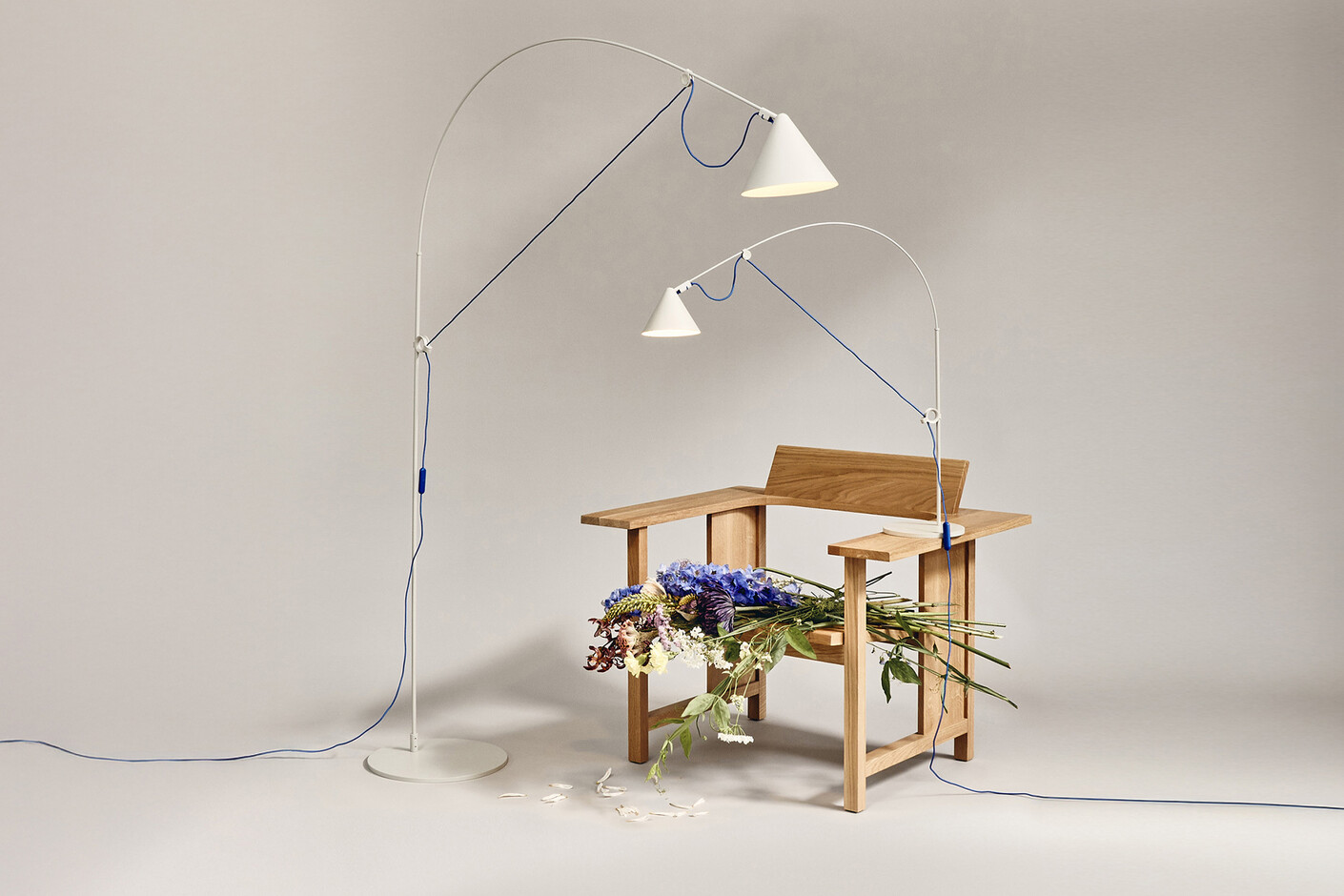
AYNO Ultramarin
Design: Stefan Diez, 2025

“We later envied the inventors of the Midgard lamp’s arm. Our lamps were adjustable too, but they simply
weren’t as elegant.”
Marianne Brandt, Bauhaus
The man whose lamps lit both the metal workshop and the artists’ studios at the Bauhaus started his career
as the owner of an engine works: Curt Fischer, today regarded as one of the greatest 20th-century inventors.
In 1919, he not only took over the Industriewerk Auma based in Thuringia, adding “Ronneberger & Fischer” to
the company’s name in commemoration of Konrad Ronneberger who had established the factory in 1912 and
had been killed three years later in the war: he also founded the Midgard brand in 1919.
With the end of WWI, industrialisation picked up pace again. People worked long hours until late in the
evening. The then-typical lamps cast light from above only, with the effect that the shadow of the worker’s
body and head would obscure the piece he was working on. For an inventor like Curt Fischer, who had
transformed horse-drawn coaches into mobile radio stations during the war and who had participated in the
development of the communication devices for the Zeppelin, this situation posed an intriguing challenge. It
wouldn’t take him long to come up with a solution: in November 1919, his famous Scherenleuchte (Scissorarm
Lamp) was born. Using the new Midgard brand name, this design was soon to be followed by other new
types of lamps: the Lenklampen (Adjustable Lamps) with the model numbers 113 and 114, both of which
would soon be found in the metal workshop of the Dessau Bauhaus, and the Maschinenleuchte (Machine
Lamp). With the development of these adjustable lamps, Curt Fischer became the inventor of directional light.
But that wasn’t all: in 1922, he created the first glare-free reflector (rotatable and asymmetrical) for perfectly
directed light.
Walter Gropius was a big fan of the Midgard lamps. He and Fischer exchanged letters between 1927 and
1931. Gropius’ successor at the Bauhaus in Dessau, Hannes Meyer, was just as thrilled and had the reading
rooms of the General German Trade Union Confederation in Bernau near Berlin fitted with Midgard lamps.
When Curt Fischer passed away in 1956, his son Wolfgang took over, heading the company until, after the
founding of the GDR, Ronneberger & Fischer was taken under state control. The company was restructured
and renamed: VEB Industrieleuchtenbau Auma became the production department of VEB Raumleuchte
Zeulenroda. The publicly owned operation produced Curt Fischer’s Machine Lamp, albeit to an inferior
standard of quality, and also another internationally successful lamp: the Spring-balanced Lamp which was
produced for a Swedish furniture retailer.
After German reunification, the company was reprivatised and given back to Wolfgang Fischer, who continued
to operate the business under the name Midgard-Licht. In addition to the Spring-balanced Lamps, he also
produced the Machine Lamp again, largely in keeping with his father’s original design. However, Wolfgang did
not manage to run the company in a commercially successful way. It was his stepdaughter, Anja Specht,
who, supported by her sister Susi Reifenstahl, restructured the business and headed the company from 2002
to 2008. But, after Anja left the business, the company went downhill again.
In 2015, David Einsiedler and Joke Rasch, the founders of Hamburg-based furniture and lighting company PLY, acquired the rights to the Midgard brand, including all existing tools and lamp parts, as well as the large company archive. Their mission: to bring Curt Fischer’s inventions back onto the market and to give them the success they deserve. Since January 2017, the production of the lamps has restarted in Hamburg. Almost 100 years of history in lamp design and production are now being continued in the spirit of the great Curt Fischer.
Midgard Licht GmbH
Hohenesch 68
22765
Hamburg
Germany
T: 0049 (0)40 3989 3256
Please fill in the form to request a printed catalogue.
Please fill in the form.